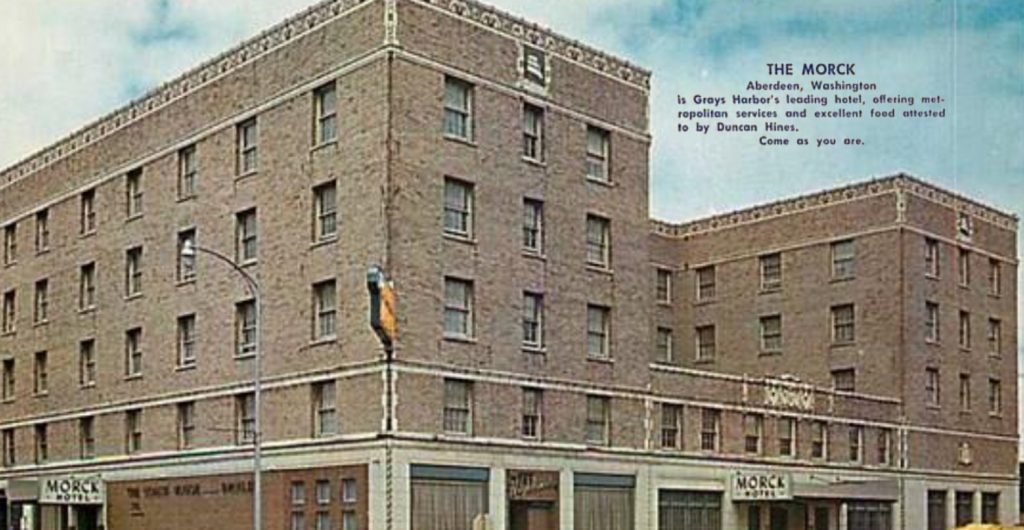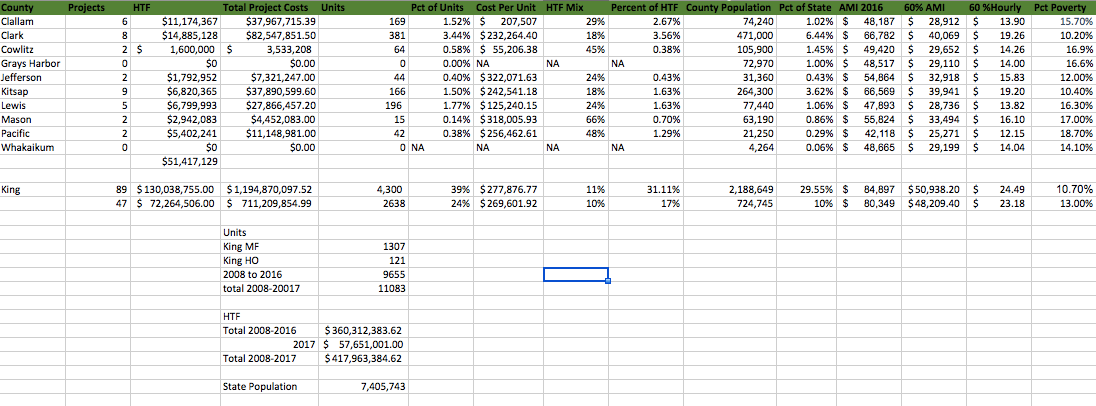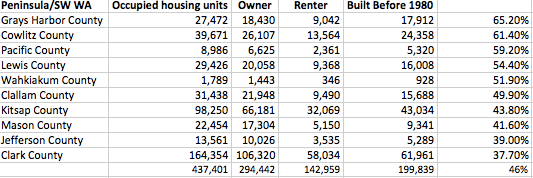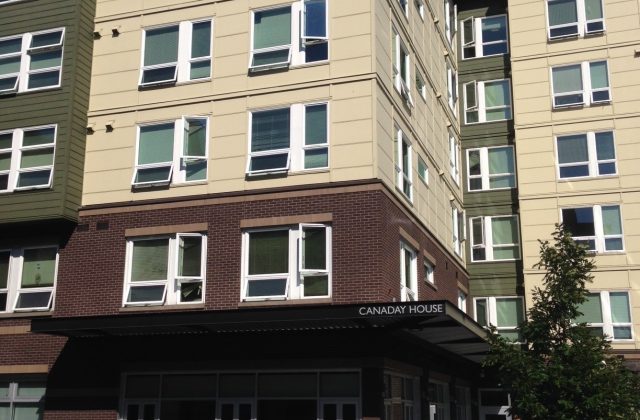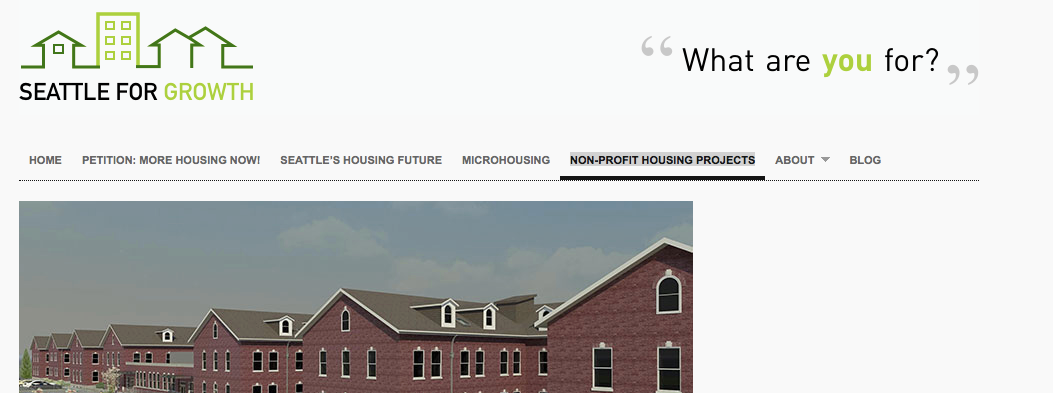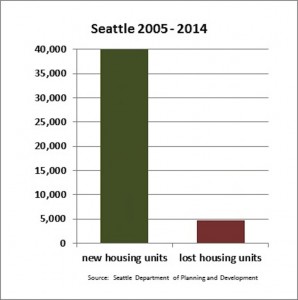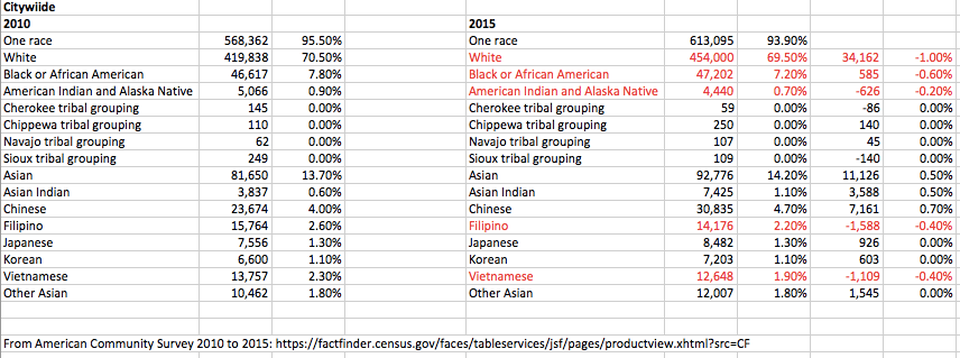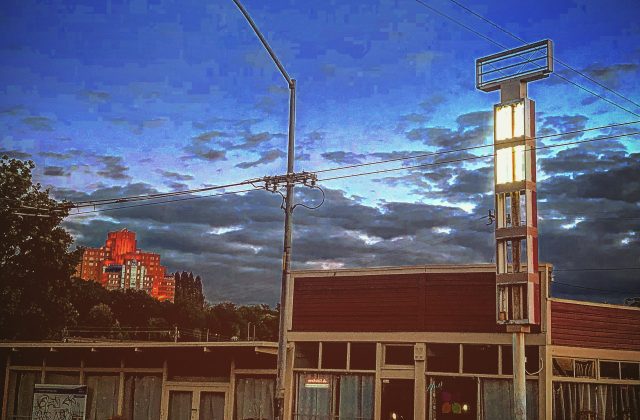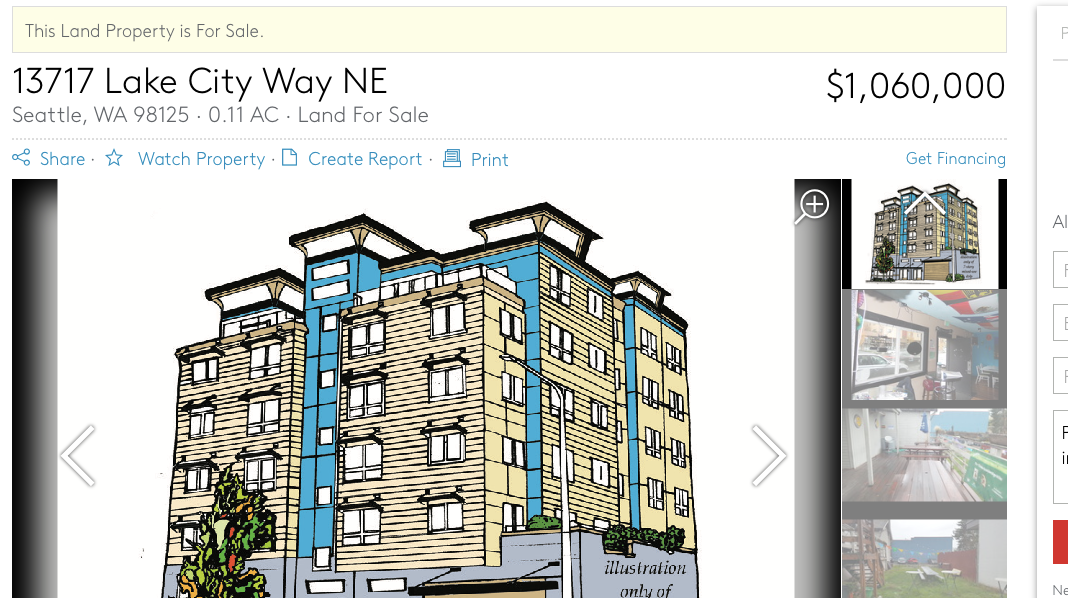Diving Deeper: Finding Out More About Building 9 and the Morck Hotel
Building 9 is not where the Air Force stores old flying saucers, it is a housing rehabilitation project proposed by Mercy Housing. Here is a description of the project:
Building 9 will offer 148 apartments for working families and small households in the historic former Naval Air Station barracks. The project is located in the beautiful 350-acre Magnuson Park on Lake Washington with proximity to many resources including the Magnuson Community Center and Sand Point Elementary School. The adaptive reuse of this vacant building will preserve the exterior and key historic interior elements with an emphasis on energy efficiency resulting in beautiful, comfortable and affordable housing.
In addition to the affordable housing, a community center, computer lab and gathering spaces for residents will be complemented by an early childhood education center operated by Denise Louie Education Center and a Neighborcare health clinic. MHNW will provide a full suite of resident services with an emphasis on health and wellness, out of school time for youth, financial literacy and housing stability.
I’ve written and talked about the project before and I’ve pointed out that it’s current price tag is 148 units for $73,000,000 or about $493,243.24 per units. For scale, consider that the passed and then repealed tax on jobs would have raised about $47 million per year, about two-thirds of the cost of this one project. Another stick to use would be my analysis of housing on the Peninsula where over the last ten years housing paid for by the Housing Trust Fund averaged about $120,000 per unit. For $73,000,000 that would mean about 608 units in Grays Harbor County, enough to reach more than 25 percent of the 2,000 units local activists are calling for there.
In case you missed it, housing is a crisis in other parts of the state. Here’s River Camp along the Chehalis River.
There are some weird irregularities in the sources and uses of the project in the Consolidated Funding Application (CFA), the catch all that allows non-profits to apply for funding from multiple agencies with one form. Here’s the sources and uses digested and you can see the full CFA at the page I created here.
| Sources | |||||
| Building 9 South – 4 Percent | |||||
| Permenant Tax-Exempt Bonds | 10% | $6,032,000 | |||
| City of Seattle | 13% | $8,047,467 | |||
| Department of Commerce | 9% | $5,750,000 | |||
| Deferred Developer Fee | 1% | $350,000 | |||
| Historic Tax Credit | 11% | $6,608,217 | |||
| Iinterest | 0% | $56,667 | |||
| GP Contribution | 0% | $100 | |||
| Total | 44% | $26,844,451 | |||
| Building 9 North – 9 Percent | |||||
| City of Seattle | 7% | $4,075,481 | |||
| Department of Commerce | 6% | $3,950,000 | |||
| Deferred Developer Credit | 1% | $900,000 | |||
| Historic Tax Credit | 7% | $4,117,086 | |||
| Interest | 0% | $38,928 | |||
| GP Contribution | 0% | $100 | |||
| Total | 21% | $13,081,595 | |||
| Expected 4 Percent Equity | 16% | $10,013,775 | |||
| Expected 9 Percent Equity | 15% | $8,982,482 | |||
| Total | 31% | $18,996,257 | |||
| Special State Appropriation | 4% | $2,500,000 | |||
| Total Sources | 100% | $61,422,303 | |||
| Uses | |||||
| Acquisition Costs | 0% | $45,000 | |||
| Construction | 81% | $50,565,796 | |||
| Soft Costs | 12% | $7,221,545 | |||
| Construction Financing | 2% | $1,353,597 | |||
| Permanent Financing | 1% | $483,165 | |||
| Capitalized Reserves | 1% | $668,822 | |||
| Other Development Costs | 3% | $1,852,478 | |||
| Bond Related Costs (4 Percent Bonds) | 0% | $250,000 | |||
| Total | 100% | $62,440,403 | |||
| Gap between Sources and Uses | -$1,018,100 | This difference is noted on the 6A Sheet | |||
| Note: Page 7A of the CFA Form shows a category called “Bridge Financing” with an amount of $30,956,597 for a “Construction Loan.” | |||||
So I asked Mercy Housing for answers to some questions about their CFA:
Hello Alisa,
You’re listed on the CFA for the building project and I thought I’d start with you on these questions (although any light that can be shed by people in the cc is welcome as well).
- Why is the public figure stated as $73 million for this project but the total development cost on the CFA is $62,440,403?
- What accounts for the difference between 6A and 7A in terms of sources and uses? The gap between the two is $1,018,100. Is that amount coming from somewhere else?
- There is a construction loan shown as bridge financing on 7A but that isn’t added into the sources total, can you explain that?
- Has the “special appropriation” been made? Is that coming through the Housing Trust Fund or is that in the recently passed Capitol Budget? I can look around for it, but if you have that history handy I’d appreciate it (when it was made, who sponsored etc)
I apologize for such elementary questions but I am reviewing some of the CFA’s we disclosed and I just want to be sure I get my figures correct.Thank you very much!Roger–
Reforming the Housing Trust Fund: Grays Harbor Housing Crisis, No Funding for a Decade
Last week a came across a story about the Presiding Bishop of the Episcopal Church visiting a housing rally in Aberdeen in Grays Harbor County. The news report in The Daily World summed up the visit and the demands of local activists, “that sought to highlight homelessness in the city and push for 2,000 new affordable housing units.” That’s a lot of units. But think of it this way: the cost to build housing on the Peninsula (without Clark County) was, over the last year about $120,873.07 or about $30,000,000 for 248 units. That same 30 million only buys 84 studio apartments in Seattle. For the same price as Plymouth Housing’s pricey studio project at 501 Rainier, Grays Harbor would have about 12.5 percent of those 2,000 units. How much Housing Trust Fund money has Grays Harbor received in the last ten years? Zero. None. Here’s email I sent to the newspaper and the participants at the rally visited by the Presiding Bishop.
Hello Scott (I’ve cc’ed Doug in case this isn’t your email), Bishop Rickel, and Reverend Monroe,
I appreciate the story on Bishop Curry’s visit. I watched the video of his speech and it was impressive for its passion and connection with the local community. And I appreciate the work being done by Chaplains on the Harbor and everyone in Aberdeen.
Would you be interested in more data about housing funding in the state of Washington?
Over the last 10 years, Grays Harbor County has received exactly zero dollars from the state’s Housing Trust Fund. That’s right, Zero.
Meanwhile, King County over the same period, the Housing Trust Fund (HTF) has funded 89 projects with $130,038,755. The total development costs for those projects is $1,194,870,097.52, that built a total of 4,300 units. King County built 39 percent of HTF units in the state during that period at an average cost per unit of $277,876.77. King County received about 31 percent of the HTF over that period.
It is true that King County is the biggest county and has about 30 percent of the state’s population. But King County has a poverty rate of 10.70 percent while Grays Harbor County has a poverty rate of 16.6 percent. And income and wages are lower in Grays Harbor County, with a person in that county who earns 60 percent of Area Median Income (AMI) taking home about $14.00 per hour compared to a similar worker in King County who earns about $24.50 an hour, ten dollars more an hour.
But aren’t rents less expensive in Grays Harbor County? Consider that in Aberdeen over the last decade, 1 unit of housing has produced for 11.6 residents in Aberdeen compared to 2.7 units in Seattle. Housing is scarce in Aberdeen, that’s why people are struggling to find it and pay for it. Housing is scarce in rural Washington.
Consider too that more than 22 percent of Grays Harbor County’s population needs basic food assistance compared to around 8 percent in King County. And, the housing stock is older in Grays Harbor County, with more than 65 percent of the housing built before 1980 when standards to reduce lead paint and asbestos were implemented. In King County, that number is about 53 percent.
Finally, housing costs a lot less to build in rural Washington. In peninsula and southwest Washington counties that did get funds to build housing, the average cost of building in a unit in the 10 peninsula and southwest Washington counties was $198,404.07 while in Seattle one recent project cost $500,000 per unit. Based on recent data we disclosed from the state, the cost per unit is approaching an average of $400,000 a unit.
So why would a group called Seattle For Growth be so concerned about housing in Grays Harbor County? We’ve seen the rapid growth of costs in Seattle for all housing, both market rate and non-profit housing. We need better housing policy here. But we’re not getting that. Instead, local non-profits are flexing their political muscle for more and more revenue, including taxing market rate builders.
We think the current system is subsidizing bad housing policies in Seattle at the expense of people in rural Washington, policies that hurt poor people here too by boosting the price of housing. It’s time to change that! So we’re working on a proposal to change the allocation of HTF resources to a block grant model based on need. That would mean Grays Harbor and all counties would get funds based on things like poverty, housing scarcity, and other measures of need rather than on ability to assemble capital.
As a Christian and an Episcopalian I appreciated Bishop Curry’s reference to the mustard seed. My favorite passage in the Gospel of Mark is when Jesus tells this parable and then tells his disciples that he speaks this way to the locals because that’s what they will understand, but to them, he tells them exactly how it is. It isn’t much longer that they are in a storm on a boat, and they are afraid for their lives. “What about us Jesus? Won’t you save us?”
Jesus stops the storm with a command. He gives them what they want. But the story ends with the disciples, the ones Jesus was most honest with being even more afraid, and asking “Who is this man that even winds and sea obey him?”
In Mark, it is a parable, the plain truth, and disciples, those most close in time and space to Jesus himself, still not understanding even though he told them the truth.
Data can be the same way. Confusing. Confounded and confounding. But the truth is in plain site. We need more housing of all kinds, in all parts of the state, for people of all levels of income. It might be hard to see in the numbers, but it is there. But often we wait, until those seeds in the data become the unmanageable and overgrown bushy weed of housing need without supply.
I’d love to head out to your community to hear more about this problem and how we can work together to get more resources to Grays Harbor and other counties who need help with housing. I want to listen to you. I’ve attached some numbers and our evolving proposal to reform the Housing Trust Fund. We’d like your thoughts.
Thanks for reading.
Roger–
Attachments:
New and Evolving Page: 10 Years of Non-Profit Housing Projects in Seattle
I am sure that nobody really cares about getting to the bottom of non-profit housing costs but me and people that have been assigned the task after I’ve asked or found funding to pay for it. One reason might be that the system state and local government use to track all the applications and spending is a mess. I’ve spent hours trying to reconcile spread sheets, lists, and dozens and dozens of application documents trying to line up the names of projects with sponsors and the final cost of the project and number of units. There isn’t one single place where this information is all kept; until now. I’ve taken all the documents and lists we’ve requested from the Washington State Commerce Department, the Washington State Housing Finance Commission (WSHFC), King County and Seattle’s Office of Housing and put all of it on one page.
It’s also a tab at the top of the page.
Even after making all these requests, we’re still missing some projects. Also when one starts down this path one realizes pretty quickly that names of projects change and most of them play out over several years. So a project might have submitted an initial application in 2013 and not actually received funding until 2015 and not opened until 2017. So the dates that I give need work along with lining up some of the cost figures.
I got two long lists from the WSHFC and from Commerce. I merged those two lists. Then I created links to the Combined Funders Applications (CFA) that we received from our requests. There were a lot of them, and in some case all we got was a 6A page. The 6A is important because it has the whole budget of the project, both sources of funding and uses. But it doesn’t have the number of units, floors and square footage. Some of the costs on the CFA documents don’t match with the big lists I got from Commerce and the WSHFC.
However, after wading through all these I do see a pattern of cost escalation over time and big costs for land. Also, I see projects that paid almost nothing for land. As I pointed out on Monday, based on a couple of market rate builders comments, it’s clear that construction costs are probably higher. I don’t know that for sure. But as far as I know this kind of analysis has never been done. It’s a lot to look at and comparisons are not going to be easy, but they are doable. And it is shocking to me that the non-profits themselves don’t seem interested in doing this work. I plan to amend and adjust and edit the page as this project unfolds, but for now it exists as a kind of warehouse of the raw data.
Why does this matter? Non-profits are driving mostly Democratic legislators and local politicians to say things like, “We need more affordable housing,” meaning “We need more money for our projects!” My guess is that their projects are way too expensive and the system used to fund them is grossly inefficient. Until we teach everyone to say, “We need more housing so that it will be affordable,” and stop believing that there is a two-tier housing market, market rate and subsidized housing, we’re going to have to expose the inefficiencies in hopes that everyone will agree we ought to eliminate as many needless limits to production of all housing so that non-profits can build units more efficiently and market rate developers can deliver their product at more competitive prices.
Why Stop at Rent Control? Herbold Wants Neighborhood Control
If you thought the drubbing the City Council took over the head tax taught them to avoid bad ideas, think again. Councilmember Herbold is willing to try anything to “solve” housing prices except allowing more housing, including mandating who gets to live in what neighborhood. This is from an email she sent this week:
Community preference polices are a different type of tool to fight displacement. The common approaches to implement community resident preferences include:
- A portion of rental or ownership units in affordable development are set-aside
- Preferred applicants may be local residents, workers, former residents, people who have been displaced
- Lottery used to select affordable housing residents/buyers
- Policy must affirmatively further fair housing- explicit analysis of racial impact.
Community resident preferences could address historic and current displacement by providing preference for community residents.
Nobody has come up with a measurable definition of displacement or gentrification. Two things are often cited, falsely, as an indication that displacement and gentrification are happening, demolition of housing for more housing and the growing whiteness of Seattle.
In the first case, over more than 20 years there were 40,000 permits for housing projects given and only 5,ooo demolitions. While these numbers are getting older they do tell the story that thousands of people are not being “displaced” because of new housing. It is new housing, of course, that any rational person would realize we need not mandates that control where people can live.
The other thing that is often cited is the mass exodus by people of color out of the city of Seattle. I wrote an article at Forbes that showed that while parts of the city that had been largely black have become much whiter, other parts of the city have shown the opposite trend, becoming more diverse and with increases in black residents. And, in fact, the city of Seattle has become less white over the last decade.
So it is questionable whether the problem that would be “solved” by Councilmember Herbold even exists. And to the extent people are unhappy about moving, we don’t know why they are moving, where they are moving, and we certainly do that what would help them stay in Seattle no matter why they moved is, yes, more housing.
But for Councilmember Herbold more housing simply can’t be the answer. The answer for her and her colleagues are more rules, more taxes, fees, and exactions to generate money for costly, slow, and inefficient non-profits.
Digging Deeper Into Non-Profit Housing Costs: Plymouth’s 501 Rainier
Seattle For Growth is the only voice in the whole housing conversation bringing attention to the costs of non-profit housing production. Why should you care? No matter what your opinions about housing the fact is that non-profits have the most political power in the way housing policy is made; they are the reasons why local politicians say we need to increase the supply of “affordable housing” (we need to increase housing supply so housing will be affordable). Because non-profit costs are so high, and production as difficult as market rate housing, they need more and more money. Their argument is that the market will never produce housing for people with less money so local government should tax market rate housing and just about everything else to get them that money. Unless we push back on this, we’ll continue to have inflation in market rents which just fuels their argument. So, along with the Joint Legislative Audit and Review Committee (JLARC) we’re digging in to their costs.
We’ve just completed a large public records request from the Washington State Commerce Department, King County, the Washington State Housing Finance Commission, and Seattle’s Office of Housing for detailed financial information on non-profit housing projects funded in Seattle over the last 5 years. This includes pro forma documents, construction costs and documents, and related items. It’s a lot to look at and process. We’ve identified over ten years, about 74 projects in Seattle that produced a total of 5,576 units at a total cost of $1,371,026,279, an average cost per unit of $245,880. Over that 10 year period, the production of non-profit housing was about 620 units per year, reaching a peak production of 783 units in 2015 and a low of 284 in the next year, 2016. You can take a look at the top line of all this here: List of HTF + LIHTC 2008 to 2018. At some point I am planning on creating a page that links to all the documents.
But let’s take a look at one project that is currently funded and in the early stages of development, 501 Rainier by Plymouth Housing Group also called Housing at Linc’s. This project is coming together at the old Linc’s Fishing Tackle store, an iconic fishing supply store that served in a way as a gateway to the Rainier Valley. It’s a familiar site to anyone who has lived in Seattle over the last twenty years. I went out to the site the other night and took some photos.
I, sadly, never set foot in Linc’s and I believe that it is a loss. But I’d much rather see the site turned into housing. But is the project an efficient use of housing resources?
Here are the top line numbers. I took these numbers from the Consolidated Funding Applications Forms which were part of our disclosure request.
| 501 Rainier (Housing at Lincs) | |
| Project Details | |
| Floors | 6 |
| Units | 84 |
| Unit SF | 39412 |
| Gross Residential SF | 47684 |
| Services | 5473 |
| Gross Non-Residential SF (1 Floor) | 9130 |
| Parking | 2799 |
| Total Gross Square Footage | 56814 |
| Total Development Cost | $30,096,526 |
| Cost Per SF | $530 |
| Cost Per Unit | $358,292 |
Here’s a look at where the funding for the project is coming from and how it is being spent.
| Funding Sources | ||
| Seattle Office of Housing | 19% | $5,719,541 |
| State Housing Trust Fund | 10% | $3,000,000 |
| King County | 3% | $1,000,000 |
| Federal Home Loan Bank Affordable Housing Program | 2% | $750,000 |
| Deferred Fee | 2% | $481,846 |
| 9% Low Income Housing Tax Credits | 57% | $17,129,309 |
| Plymouth Housing Group Loan | 7% | $2,015,830 |
| Total Sources: | 100% | $30,096,526 |
| Uses | ||
| Land (6,000 SF) | 12% | $3,507,335 |
| Construction: | 64% | $19,396,634 |
| Soft Costs: | 13% | $4,026,535 |
| Pre-Development / Bridge Financing | 1% | $288,052 |
| Construction Financing | 1% | $418,329 |
| Permanent Financing | 1% | $300,019 |
| Capitalized Reserves | 3% | $869,143 |
| Other Development Costs | 4% | $1,290,479 |
| Total Development Cost: | 100% | $30,096,526 |
Let me say that I am not a non-profit housing expert. Far from it. I was a non-profit housing director for about three years and worked on one project. That means I am familiar with these budgets but not familiar enough to weigh in on this project from a non-profit perspective. I can sort of take a high level look at this. I’ll share thoughts from a market rate developer in later paragraphs.
There are a lot of funding sources here, including the City, the State in the form of the Housing Trust Fund, King County, tax credits from the Washington State Housing Finance Commission, and the Federal Home Loan Bank’s Affordable Housing Program (FHLB HP), a source I’m not familiar with. The developer fee deferral is a kind of a hat trick to put the fee for the non-profit required by most funding sources back to work for the project. Obviously non-profits don’t “profit” but the fee is sort of what would be considered, loosely, the “profit” for the developer here. If memory serves, the non-profit is always required to hold aside about 10 percent of the project income as their fee, but some can be deferred to fund the project. And the loan from Plymouth Housing Group appears to be for the non-residential portion of the project. Each and every one of these sources comes with lots of lawyers and paperwork.
As for the costs the land seems very expensive. I looked up a comparable property in Lake City and it was being offered at about $1,000,000. I’ll post a screen shot because I am guessing the link won’t last forever. But the site currently has an old bar on it that would have to be demolished to make way for a project like the one pictured.
The construction costs? I have no idea myself. But you can take a look at the detailed construction cost estimate. I do recall my own efforts to reduce costs on my project were fruitless. There simply wasn’t anything in the budget that be gotten rid of that would appreciably or significantly lower the cost of the whole project. For example, the project could save $1,436,180 by getting rid of the line item “finishes.” But what’s in that line? Most of it is gypsum drywall, an item that has spiked in costs recently along with other things like lumber and steel. Most of the construction budget is of the “it is what it is” variety.
Soft costs are also hard to say much about and are mostly for the architect, ringing in at $1,104,670 and more than $2 million for the developer fee. But that fee is a requirement and is mostly an accounting function. There doesn’t seem to be much fat in the soft costs. And I distinctly remember that when we had change orders we often had to dig into soft cost contingency and lenders really didn’t like that.
So when I look at the total cost I can’t see any savings on the surface. There isn’t a line called “waste” or “inefficiency” just like in a market rate project budget there isn’t a line for “greed” and “avarice.” But when one considers that the recently repealed tax on jobs was supposed to set aside $47 million for housing to “solve” homelessness for some 14,000 people, this project is sobering. This one 84 unit project with a delivery schedule of sometime in 2020 would consume about 75 percent of that annual tax. One project. At the cost per unit of this project the total annual tax would only pay for about 130 units. Even with more sources added, at this rate of production this just won’t create enough units to “solve” very much of the problem.
What does a market rate developer think of these numbers? I asked a developer who builds comparable product, studios and smaller apartments, to tell me what he thought of these numbers. Here’s what he said:
As a comparison we are near building permit issuance for an 85 unit . . . mix of micro studios, and micro 1BR’s on a similar sized lot [near a] light rail station. We paid $450k for the dirt three years ago (zoned NC-3 85), although current market price is probably around $650k – $750k.Our project is 6 stories plus roof deck and basement (one level of concrete podium). Our project costs are around $13.5M, including hard costs, soft costs, permit fees, financing, etc. I find it hard to believe they paid $3.5M for 6,000 SF (nearly $600 psf). If they did, that’s insane…So, as you can imagine all their costs are out-of-whack (where do I start). Our architectural, for example, was less than half of theirs. The developer fee is high but it’s presence doesn’t bother me that much; any project should have a profit margin in there. But it’s based on an enormous budget rather than something closer to market.
Things that look unusual:
Land Costs are 2x what you would expect, esp. for a site needing remediation.
Developer fee is 12% of construction cost. Typical is more like 3%
Contractor P&O is 2% of construction. Typical is more like 8%
750K for permits fees and hookups seems odd. I would normally guess that to be in the 100K-200K territory.
10% construction contingency is very high, unless this is for an early stage estimate.
If we apply the numbers from a builder who builds projects like this to the non-profit project, the total development cost is more like $13,950,000 or about $166,071 per unit. That would mean more like 283 units for $47,000,000.
What is unfortunate is the non-profits refuse to acknowledge there is an issue here. The answer is always more money, more money, more money. The thirst for more revenue sources to fund these kinds of projects will never be quenched. And while looking at the details doesn’t yield anything that points to an easy fix, it would be helpful if the experts on building non-profit housing were putting their energy into reforming this system rather than disputing the fact that the system really is expensive and inefficient.
Those experts and supporters already acknowledge that the problem of high cost housing is shared across market rate and non-profit sectors. Remember when the board of Capitol Hill Housing was talking about suing me because I was doing long division (88 units at $47 million is about $500,000 per unit)? Here’s what their board members said then:
A lot of people focus on numbers, but we should focus on value of our buildings, including their sustainability and their effect on the community. [Another board member] mentioned that to the extent that there are cost differentials, we could give examples of why it might be more expensive and that those things should be changed (ie government regulations). [The first board member] proposed that comparing market rate and affordable housing is like comparing apples and oranges.
The public is now pushing back and their message is clear: “Improve the way you’re spending the money we’re giving you or we won’t give you anymore.” How much longer will non-profits be able to use elected officials to shake down market rate development through policies like Mandatory Inclusionary Zoning (MIZ)? Those officials may no longer hold office at the end of next year. The time is now to talk about reducing costs.





